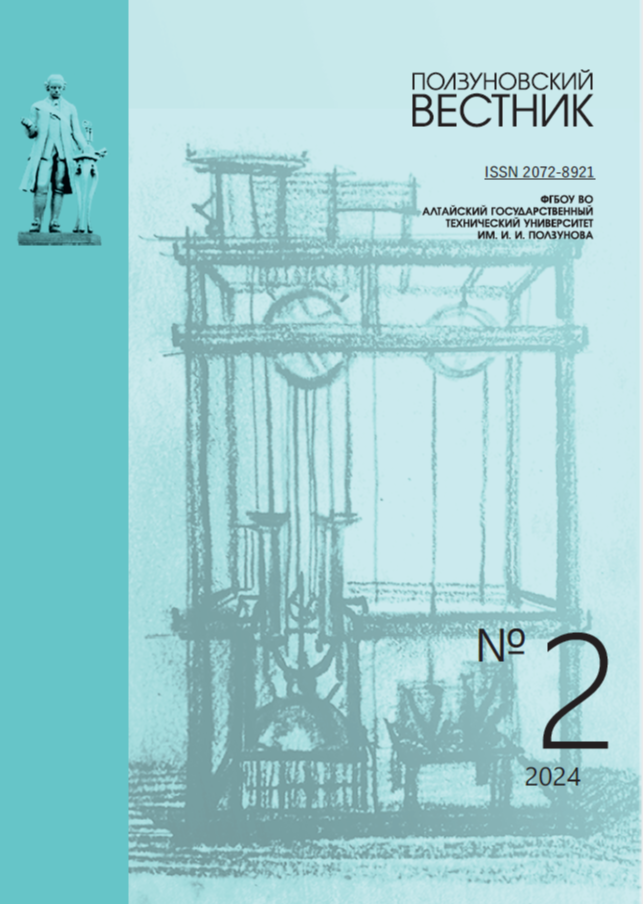PROSPECTS FOR THE USE OF OILSEED COMPONENTS IN BREAD TECHNOLOGY
ZNWWDN
DOI:
https://doi.org/10.25712/ASTU.2072-8921.2024.02.006Keywords:
oilseeds, hemp flour, linseed flour, soybean flour, enriched bread, biochemical processes, fermentation, physical and chemical parameters, rheological properties, chemical composition, nutritional value, daily requirement.Abstract
Considering the prospects of expanding the range of fortified foods, while maintaining and improving quality characteristics and rationalizing the technological cycle of production, the introduction of new technologies is an urgent task for manufacturers. The purpose of this study was to analyze the prospects of using flour from oilseeds in combination with arabinogalactan in the technology of enriched bread. Studies of the dynamics of biochemical processes, physicochemical and rheological properties of products were carried out using standard methods. During the ripening of semi-finished products intensification of enzymatic processes accompanied by gluten formation and acid accumulation was observed, which allowed to reduce the duration of dough fermentation by 11,8-23,5 %. When 10 % of hemp, flax or soybean flour was added, the pH level was 5.44-5.85 % lower and titratable acidity was 14.3-28.6 % higher relative to the control sample. Consumption of daily norm of bread containing 8-10 % of hemp, flax or soy flour allows to satisfy the need in vitamins B1, B6, E and PP - by 15,7-32,0 %; in beta-carotene - by 17,3-28,7 %, in zinc, iron, magnesium and phosphorus - by 13,4-52,6 %; in dietary fibers - by 20,2-30,8 %, in arabinogalactan - by 16 %. The values of physicochemical quality indicators of enriched bread samples slightly fluctuated within the regulated values. The rheological properties of the experimental samples differed both among themselves and with the control sample. The values of total and elastic deformation decreased when hemp and soybean flours were introduced by 26.5-41.8%, and when 6-10% flaxseed flour was added, an increase in the plastic properties of the bread crumb was observed. The use of oilseed flour and arabinogalactan in bread formulation had a positive effect on the duration of the technological process, quality and nutritional value of manufactured products
References
Богомолова, И.П. Направления и механизмы государственного регулирования производства функциональных хлебопродуктов / И. П. Богомолова, Е. А. Белимова // Вестник Воронежского государственного университета инженер-ных технологий. – 2014. – № 2 (60). – С. 177–183.
Технологические решения при производстве хлебобулочных изделий с применением продуктов переработки чумизы / Л. И. Кузнецова, М. К. Садыгова, О. С. Башинская [и др.] // Вестник КрасГАУ. – 2018. – № 3(138). – С. 176–181.
Ухина, Е. Ю. Новый продукт профилактического питания / Е. Ю. Ухина // Технологии и товароведение сельскохозяйственной продукции. – 2017. – № 1(8). – С. 42–48.
Use of non-traditional food additives in the production of bakery products / Z. B. Yessimsiitova, N. T. Ablaikhanova, G. A. Tussupbekova [et al.] // Вестник Казахского национального медицинского университета. – 2018. – No 3. – P. 212-214.
Влияние арабиногалактана, выделенного из древесины лиственницы сибирской, на хлебопекарные достоинства муки мягкой пшеницы и качество хлеба / М.Ф. Ермакова, А.К. Чистякова, Л.В. Щукина с соавт. // Химия растительного сы-рья. – 2009. – №1. – С. 161–166.
Конструктивные и технологические приемы интенсификации замеса теста и повышения качества хлеба / Г. О. Магомедов, В. Л. Чешинский, Ю. Н. Труфанова [и др.] // Вестник Воронежского государственного университета инженерных технологий. – 2019. – Т. 81, № 1(79). – С. 232-237. – DOI 10.20914/2310-1202-2019-1-232-237.
Степычева, Н.В. Теоретические и практические аспекты разработки функциональных хлебобулочных изделий: учебное пособие / Н.В. Степычева, С.Н. Петрова. – Санкт-Петербург: Троиц-кий мост, 2022. – 184 с.
Мельникова, Л. А. Характеристика льняной муки как перспективного ингредиента при изготовлении сахарного печенья с повышенной пищевой ценностью / Л. А. Мельникова, Е. Н. Гурнов-ская, С. Е. Томашевич // . – 2016. – № 4(34). – С. 68-74.
Оценка пищевой ценности муки конопляной относительно традиционных видов безглтеновой муки / Л. Г. Ермош, Н. В. Присухина, Е. Н. Непомнящих, С. С. Савенков // Вестник КрасГАУ. – 2022. – № 8(185). – С. 194-201. – DOI 10.36718/1819-4036-2022-8-194-201.
Меренкова, С.П. Обоснование технологии растительного молока на основе семян конопли технической и оценка его пищевой и биологической ценности. / С.П. Меренкова, И.Ю. Потороко, Д.В. Ильков и др. // Вестник ЮУрГУ. Сер. Пищевые и биотехнологии. – 2019. – Т. 7. – № 3. – С. 41–51. – DOI 10.14529/food190305.
MP 2.3.1.0253-21. Методические реко-мендации «Нормы физиологических потребно-стей в энергии и пищевых веществах для различных групп населения Российской Федерации»: утв. Федеральной службой по надзору в сфере защиты прав потребителей и благополучия человека 22 июля 2021 г. Москва: Изд-во стандартов, 2021. 72 с.
Downloads
Published
How to Cite
Issue
Section
License
Copyright (c) 2024 Svetlana P. Merenkova, Dmitry I. Devyatkin

This work is licensed under a Creative Commons Attribution 4.0 International License.















 .
. This work is licensed under a
This work is licensed under a 
